Troop Surge in Afghanistan: Some Essential Background
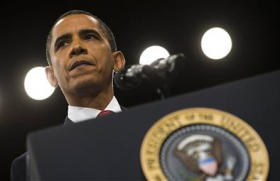 (Note: This post was published before Obama’s speech, but remains an excellent guide.)
(Note: This post was published before Obama’s speech, but remains an excellent guide.)
If you cannot speak very intelligently about U.S. policy in Afghanistan, you are not alone. Right now the debate on Afghanistan raging in the media is dominated by hawks on the right saying President Obama is “dithering,” and anti-war protesters on the left saying President Obama is becoming “just like Bush.” Meanwhile, the broadcast media has decided the Tiger Woods story is the big issue of the day.
To avoid getting bogged down in the quagmire of the debate on Afghanistan, I found it was helpful to turn away from television and blogs to read newspapers and listen to radio. In particular, I found several Op-Eds by and interviews with Sen. Russ Feingold (D-WI) to be extremely informative. Feingold sits on the Senate Foreign Services and Intelligence Committees, so he is as briefed as they get on what is really happening in Afghanistan. Feingold explains the situation in clear language. Plus, from late 2008 to mid 2009, Feingold’s position on the use of force in Afghanistan changed. Taking a few minutes to read what Feingold has to say is a great way to get up to speed. By the end of this article, you should have no trouble answering the question, “More Troops to Afghanistan, yes or no?”
October 2008: Military Surge May Not Achieve Our Goals
Writing in an Op-Ed for the Christian Science Monitor (Oct. 24, 2008) at the tail end of the Bush administration, Feingold introduced the topic of Afghanistan with this crucial statement:
Washington policymakers and others are increasingly recognizing that we need to return our attention to Afghanistan and the threat of Al Qaeda. While the [Bush] administration has pursued a misguided war in Iraq, the Taliban has regrouped in Afghanistan, Al Qaeda has established a stronghold across the border in Pakistan, and Al Qaeda affiliates have gained strength around the world.
But few people seem willing to ask whether the main solution that’s being talked about– sending more troops to Afghanistan – will actually work.
OK, so that was the state of the Afghanistan question at the end of 2008: (1) Bush went into Iraq when he should have finished the job in Afghanistan; (2) policy makers and others (e.g., the public, military leaders, presidential candidates) now recognize the need to refocus on Afghanistan; but (3) nobody is willing to ask if the use of greater force is the best answer. Three basic issues, easy enough to understand.
After laying the groundwork for a discussion, Feingold then posed a series of questions that summed up the policy dilemma we faced as a nation in Afghanistan at the end of the Bush administration:
For far too long, we have been fighting in Afghanistan with too few troops. It has been an “economy of force” campaign, as the chairman of the Joint Chiefs of Staff put it. But we can’t just assume that additional troops will undo the damage caused by years of neglect.
Sending more US troops made sense in, say, 2006, and it may still make sense today. The situation in Afghanistan has deteriorated badly over the past year, however, despite a larger US and coalition military presence.
We need to ask: After seven years of war, will more troops help us achieve our strategic goals in Afghanistan? How many troops would be needed and for how long? Is there a danger that a heavier military footprint will further alienate the population, and, if so, what are the alternatives? And – with the lessons of Iraq in mind – will this approach advance our top national security priority, namely defeating Al Qaeda?
In other words, we should have had more troops in Afghanistan to achieve our goals from the beginning, but by late 2008, we could no longer just increase troop levels and expect to defeat Al Qaeda. We do not get a “do over” in Afghanistan, Feingold was telling us. The low troop numbers created problems, including but not limited to the population turning against the U.S. military. We could, Feingold warned, increase troop levels to what they should have been all along only to find that the higher levels resulted in more antagonism by the Afghan public against the U.S. Or maybe not. In late 2008, the jury was still largely out about how to achieve our goals.
For the rest of the Op-Ed, Feingold then explains that even if we increased military levels, that greater force would not achieve our goals if we did not also solve several other problems, each of which is daunting and complex by itself:
Regardless of whether we send more troops, we need to understand that, as in Iraq, there is ultimately no military solution to Afghanistan’s problems. Unless we push for diplomacy and a regional approach, work to root out corruption, stamp out the country’s narcotics trade, and step up development and reconstruction efforts, Afghanistan will probably continue its downward trajectory.
Here again, Feingold gives us three basic points to consider. Success in Afghanistan will depend on: (1) a regional approach to diplomacy; (2) rooting out corruption in Afghanistan governance; and (3) replacing the opium trade with viable and legal rural development. The U.S. military could blast Al Qaeda back to the Jurassic period, but unless we address diplomacy, corruption, and drugs the situation could spiral down just the same.
Feingold then concludes with this statement:
The decision to go to war in Afghanistan was the right one, but after years of misplaced priorities and muddling through, we have to do some hard thinking before asking our military to create the stability and security that are badly needed there.
Shortly after Feingold’s Op-Ed appeared, Barack Obama won the Presidential election.
August 2009: Military Surge Likely to Push Al Qaeda into Pakistan
Less than a year into the Obama administration, as it became clearer that the new President might seek a troop surge in Afghanistan, Feingold clarified his position. Writing in an Op-Ed for the Wall Street Journal (Aug 28, 2009), Feingold explained that the Bush administration’s poor handling of the situation in Afghanistan had created a dangerous link between our policy there and our policy in Pakistan:
President Barack Obama is rightly focusing on this critical part of the world. But I cannot support an open-ended commitment to an escalating war in Afghanistan when the al Qaeda operatives we sought have largely been captured or killed or crossed the border to Pakistan.
Ending al Qaeda’s safe haven in Pakistan is a top national security priority. Yet our operations in Afghanistan will not do so, and they could actually contribute to further destabilization of Pakistan. Meanwhile, we’ve become embroiled in a nation-building experiment that may distract us from combating al Qaeda and its affiliates, not just in Pakistan, but in Yemen, the Horn of Africa and other terrorist sanctuaries.
These two short paragraphs sum up the reasons Feingold could not support additional troops being sent to Afghanistan. The key problem is that the “open-ended commitment to an escalating war in Afghanistan” had strengthened al Qaeda’s presence in Pakistan. At the same time, the attempt by the U.S. to launch a viable nation state in Afghanistan had soaked up so much attention and resources that al Qaeda was now flourishing in new places.
Feingold then explains exactly what the new policy should be:
We need to start discussing a flexible timetable to bring our brave troops out of Afghanistan. Proposing a timetable doesn’t mean giving up our ability to go after al Qaeda and the Taliban in Afghanistan. Far from it: We should continue a more focused military mission that includes targeted strikes on Taliban and al Qaeda leaders, and we should step up our long-term civilian efforts to deal with the corruption in the Afghan government that has helped the Taliban to thrive. But we must recognize that our troop presence contributes to resentment in some quarters and hinders our ability to achieve our broader national security goals.
Again, Feingold gives us three key points to consider: (1) putting in place a timetable for troop withdrawal from Afghanistan (a “flexible” timetable); (2) continuing a more focused military mission aimed at Taliban and al Qaeda leaders; and (3) stepping up the effort to root out corruption in the Afghan government.
Those three points are the pillars of Feingold’s Afghanistan policy recommendation for President Obama. What would this mean in real time?
>>>NEXT: Nation Building: Whose Nation Are We Building?
Pages: 1 2
This is an opinion piece. The views expressed in this article are those of just the author.
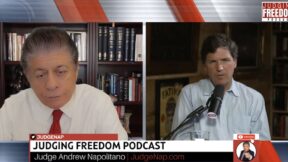
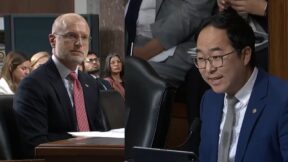
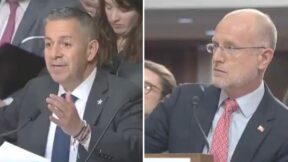
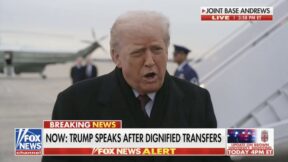
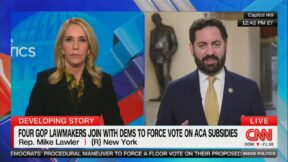
Comments
↓ Scroll down for comments ↓